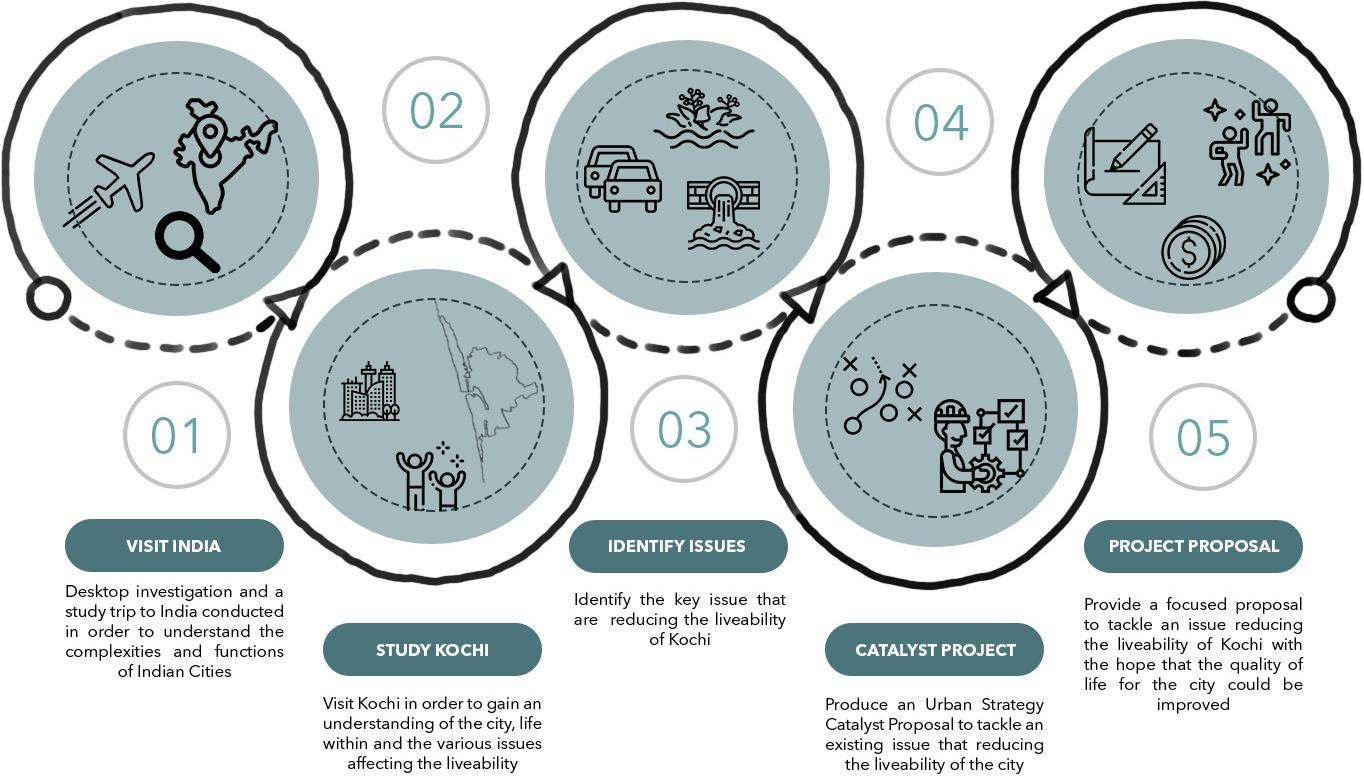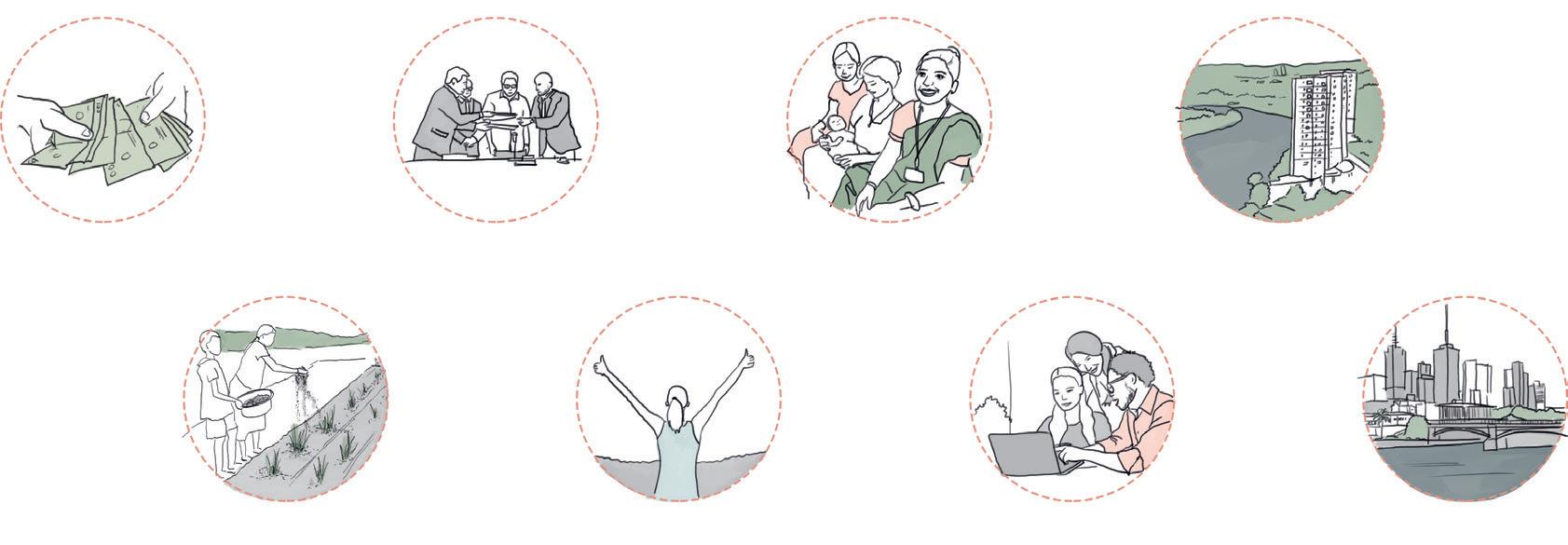
3 minute read
Liveable Urbanism
Liveable Urbanism is an urban catalyst proposal which has been developed in order to create a more liveable and sustainable Kochi. By understating what makes a city liveable, highlighting key issues within the city and researching the complex dynamic systems in Kochi, and learning about its social, economic, environmental, governmental and spatial sub-systems, the key issues within the city can be identified and proposals to tackle these issues can be formed.
THESIS AIM
Advertisement
This thesis aims to investigate how clearing the waterways in Kochi of the invasive Water Hyacinths through economic incentives can be implemented as an urban catalyst to improve the Health, Economics, social capital and environment of the city. Thus improving the liveability for those within the city.


The port city of Kochi is positioned on the south-west coast of India, part of the district of Ernakulam in the state of Kerala. As the most densely populated city in Kerala Kochi was once a vital key of wealth for India as the spice trading centre on the west coast of India from the 14th century onward. Known as the ‘Queen of the Arabian Sea’, it has always had a close connection to water throughout its history. The waterways of Kochi once brought wealth, food through the fishing industry and allowed for transportation. By reviving the waterways of Kochi the aim is to improve the liveability of the city. Elements of the city which will be improved by clearing the waterways are shown bellow:
PHYSICAL WELL-BEING MENTAL WELL-BEING

CITY IDENTITY SUSTAINABILITY QUALITY OF LIFE
94.8 KM 2 AREA OF KOCHI
6,340 PEOPLE PER KM 2
41.8% OF POPULATION IS EMPLOYED

97.2% LITERACY RATE
2.1 MILLION METROPOLITAN POPULATION
LIVEABILITY + WATER

WATERS ROLE IN LIVEABILITY
The correlation between healthy waterways and liveability is being researched in detail in cities such as Sydney and Melbourne which are considered to be some of the most liveable cities according to liveability indices. 1
There is a growingly need for clean waterways in Kochi yet funding and research is lacking. Analysing data created from other countries on waterways revealed the benefits of a healthy water system with relation to liveability hence it is vital to clear Kochis waters. Especially as the city like many others in India is rapidly expanding and being urbanised, thus a solution to clean the water is imminent.
1 IWA. 2016. Water is the Key to Prosperity and Liveability in Cities of the Future. Available at: https://iwa-network.org/water-is-the-key-to-prosperity-and-livabilityin-cities-of-the-future/. Accessed on: 15th May 2020
ECONOMY
Healthy waterways result in a more stable economy as the city is more prepared EFFICIENT CITY
Clear waterways have been proven to create a more efficient city due to better policy COMMUNITY
Communities place high value on projects that improve the health of local waterways HOUSING
Research shows people are willing to pay more for a house close to a healthy waterway
ENVIRONMENT
Well planned water services support growth in economy and the ecosystem WELL-BEING
A well managed urban water cycle can improve the physical and mental well-being of the citizens PRODUCTIVITY

Productivity is influenced by the way the cities water is managed LIVEABILITY
Water is at the heart of a cities liveability. The built and natural environment can be improved by the water
Source: CRC. Waters Role in Liveability. Available at: http://www.watersensitivecities.org.au/wp-content/uploads/2018/02/crc-infographic-final-DC-180220.pdf. Accessed on: 28th May 2020
785 Million people lack basic drinking water worldwide 2 Billion people use drinking water contaminated with faeces worldwide At least people die of diarrhoea each year after drinking contaminated water 485,000 At least 2025 half the worlds population will live in water stressed areas By 10% of worlds population consume food irrigated by wastewater At least 159 Million drink water directly from surface water such as streams + lakes World Health Organisation. 2019. Drinking Water. Available at: https://www.who.int/news-room/fact-sheets/. Accessed on 02 May 2020












